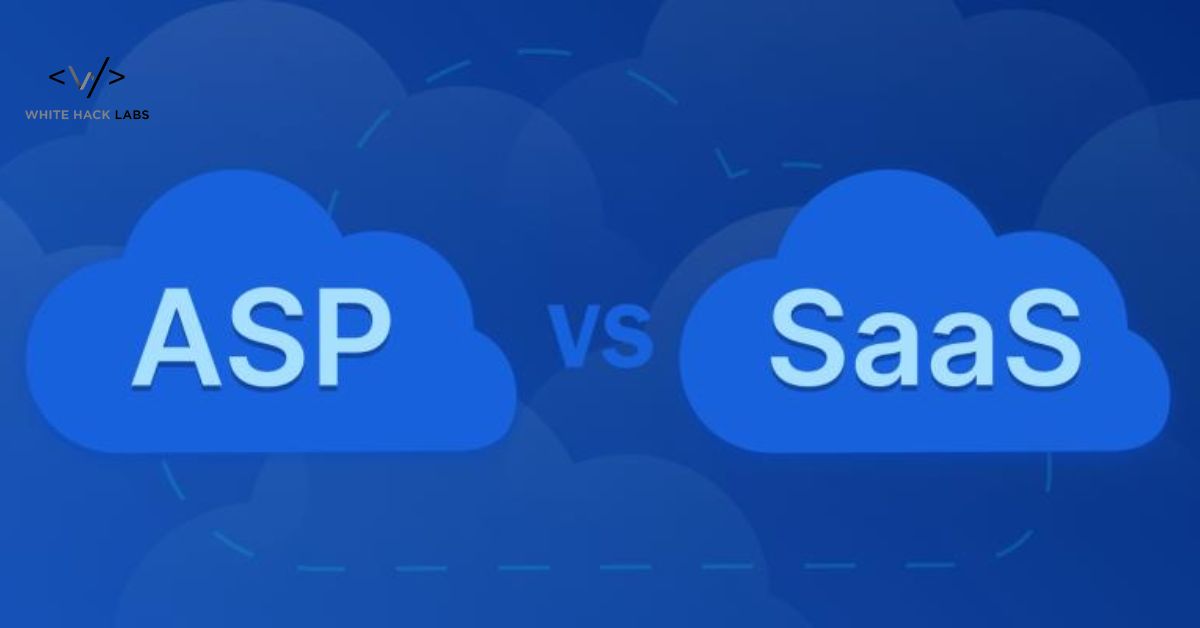
Introduction:
A lot of people connected with technology are buzzed by the hidden meanings of the acronyms that they come across everyday like bees in a digital garden. Two such abbreviations are ASP (Application Service Provider) and SaaS (Software as a Service) that are widely used in the software industry. It can be like trying to solve a tricky code to distinguish between these two but don't worry because we will answer the subtle differences between ASP and SaaS.
The Digital Battlefield: ASP Takes the Stage
In the ever-evolving landscape of software delivery, ASP emerges as a pioneer, standing for Application Service Provider. At its core, ASP encapsulates a model where an external service provider hosts and manages applications for clients. Picture it as renting a digital suite of applications tailored to your needs, without the hassle of hosting and maintenance on your own servers.
Diving into ASP Characteristics:
With its foundations well established in the late 1990s, ASP revolutionized the way that companies acquired and used software. It offered a centralized solution that let users access apps remotely, relieving customers of the financial burden associated with significant infrastructure investments. CRM tools and enterprise resource planning (ERP) systems are among the applications hosted by application service providers (ASPs).
Why Consider ASP?
The allure of ASP lies in its potential to alleviate the strain on an organization's IT infrastructure. Small to medium-sized enterprises found solace in the cost-effectiveness and flexibility ASP brought to the table. No more wrestling with server management or constant software updates; ASP promised a streamlined approach to software utilization.
SaaS Steps into the Spotlight:
In the modern day, Software as a Service (SaaS) has become increasingly popular. Although ASP established the foundation, SaaS develops the idea further and becomes a more complete and approachable solution.
Unveiling the Essence of SaaS:
SaaS is the modern maestro of software delivery. SaaS gives users online access to whole software applications, in contrast to ASP, which is mostly focused on hosting applications. It's similar to being a member of an online orchestra of tools and services that you can access from any internet-connected device.
What Sets SaaS Apart?
SaaS distinguishes itself with its subscription-based model. Users pay a recurring fee to access the software, often enjoying automatic updates and maintenance. The cloud-based nature of SaaS allows for seamless collaboration, making it a favorite among businesses where real-time interaction and flexibility are paramount.
Decoding the Differences:
Now that we've glimpsed into the realms of ASP and SaaS, let's unravel the key differences that set them apart in the digital symphony.
Hosting Dynamics:
ASP: With ASP, the software is hosted on the provider's servers, relieving clients of the infrastructure burden. However, it may still involve some level of client-side management.
SaaS: In contrast, SaaS delivers the entire package – the software, infrastructure, and ongoing maintenance – directly through the cloud. Users need not worry about intricate server configurations; they can simply log in and start utilizing the services.
Deployment Models:
ASP: ASPs offer a more tailored approach, often allowing clients to choose specific applications based on their requirements. It provides a certain level of customization but may demand a more hands-on approach from the client.
SaaS: SaaS, on the other hand, delivers a more standardized experience. The software is ready to roll right out of the virtual box, promoting a plug-and-play ethos. While customization options may be limited compared to ASP, the simplicity is a boon for many users.
Cost Structures:
ASP: The cost structure of ASP often involves an initial setup fee, followed by recurring charges based on usage. This model can be beneficial for those seeking flexibility but may pose challenges in predicting long-term expenses.
SaaS: SaaS opts for a subscription-based model, where users pay regular fees for access. This predictable, recurring cost structure simplifies budgeting and aligns well with the subscription-driven economy we find ourselves in today.
Accessibility and Collaboration:
ASP: ASPs provide remote accessibility to applications but may lack the real-time collaborative features that have become essential in the modern workplace.
SaaS: SaaS shines in the realm of accessibility and collaboration. With the flexibility of cloud-based solutions, teams scattered across the globe can seamlessly collaborate, fostering a more dynamic and efficient workflow.
The White Hack Labs Approach: ASP vs. SaaS Security Showdown

In the realm of cybersecurity, where every digital step comes under the scrutinizing gaze of potential threats, the choice between ASP and SaaS becomes more than a matter of deployment models and cost structures. Security considerations play a pivotal role in determining the robustness of any software delivery model.
Security in ASP:
ASP, with its history rooted in a time where cybersecurity threats were still finding their digital legs, may present challenges in the security domain. While ASPs implement measures to safeguard hosted applications, the dispersed nature of client-side management can introduce vulnerabilities.
White Hack Labs ASP Defense Strategy:
White Hack Labs, with its proactive defense approach, understands the nuances of securing ASP environments. Through meticulous penetration testing and vulnerability assessments, they fortify ASP deployments, ensuring that potential security gaps are identified and addressed before malicious entities can exploit them.
Security in SaaS:
As a more modern model, SaaS integrates the most recent developments in cybersecurity. To counter possible dangers, cloud service providers extensively invest in multi-layered defenses, strong security standards, and data encryption.
White Hack Labs SaaS Shielding Expertise:
White Hack Labs adjusts their tactics in response to the changing cybersecurity environment. Their knowledge of SaaS security goes beyond conventional countermeasures, with an emphasis on utilizing cutting-edge technologies and ongoing innovation to keep ahead of new threats.
Choosing the Right Symphony for Your Business
At the intersection between ASP and SaaS, organizations must make a strategic decision that will impact their digital future rather than just focusing on technology. The following factors should be taken into account when making decisions:
Scalability Needs:
ASP: If scalability is a top need for your company and you need a more customized approach, ASP might provide the flexibility you need to customize apps to meet your needs.
SaaS: In a market that is changing quickly, SaaS offers a ready-to-use solution with little setup difficulties for companies who prioritize speedy deployment and ease of scalability.
Budget Considerations:
ASP: The initial setup fee of ASP may appeal to businesses with budget constraints. However, long-term costs can be variable, requiring careful monitoring and management.
SaaS: SaaS's subscription model provides predictable, recurring costs, simplifying budget planning and offering a more stable financial outlook.
Security Priorities:
ASP: Businesses that adopt ASP must pledge to backend security measures steeply but should not neglect the need for secured client-side architecture, which is left to the clients under the shared responsibility model.
SaaS: Cloud-centric security model of SaaS certainly fits the type of businesses which are looking for a "hands off" security model, allowing for the cloud service provider to handle it.
White Hack Labs: Your Cybersecurity Maestro

In the midst of the ASP vs. SaaS symphony, security remains the overture that sets the tone for the entire performance. White Hack Labs, standing as a beacon of cybersecurity excellence, ensures that regardless of the software delivery model chosen, businesses are fortified against the ever-evolving threats lurking in the digital shadows.
A Unified Approach:
Understanding that the choice between ASP and SaaS isn't a binary decision, White Hack Labs adopts a unified approach. They manage both models and use their cybersecurity strategies as per the unique needs of each client. It is not about only guarding against cyber threats but also about creating a safe and secure environment for businesses to do business on digital platforms.
The Future of Software Delivery: A Harmonious Blend
In the future, software delivery will be like a musical blend. Instead of choosing between two separate options, companies can combine the best of both: customization from Application Service Providers (ASP) and easy access from Software as a Service (SaaS). This creates a flexible solution that meets their unique needs.
White Hack Labs' Role in the Digital Symphony:
As a leading force in the cybersecurity space, White Hack Labs actively drives change rather than just responding to it. They lead companies through the complex tunes of the digital world by remaining on the cutting edge of technology and appreciating the collaboration between ASP and SaaS.
In Conclusion: Orchestrating a Secure Digital Future
Choosing the right software is important, and security is the most important thing to consider. Whether you prefer customizable options (like ASP) or easy-to-use services (like SaaS), White Hack Labs can help you choose securely. They focus on keeping your software safe through constant improvement and teamwork, just like a leader guiding a team. They'll help you navigate the world of software so you can make the best choice for your business.

